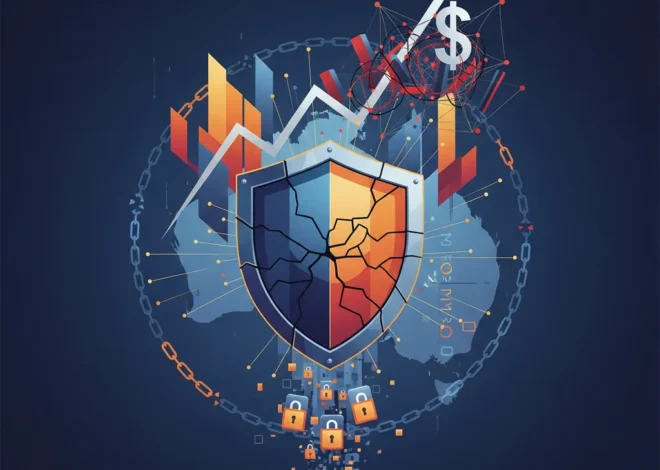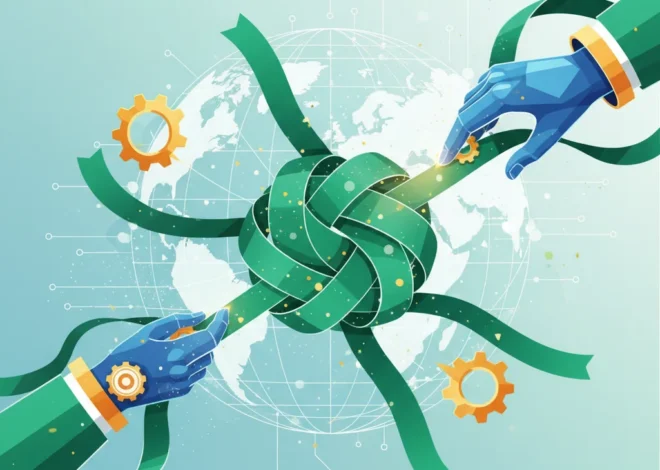
The Vulture and the Stock Ticker: How Unseen Ecological Risks are Redefining Modern Finance
The Butterfly Effect in Your Portfolio
What does the fate of an endangered vulture in South Asia have to do with the global economy, your investment portfolio, or the future of banking? On the surface, absolutely nothing. One is a matter for ecologists; the other, for economists and finance professionals. But dig a little deeper, and you’ll find a startling connection that serves as a powerful metaphor for the new reality of risk and value in the 21st century.
Consider this chain of events: a common anti-inflammatory drug, diclofenac, used to treat livestock, proves lethal to vultures that feed on their carcasses. As vulture populations plummet, the number of feral dogs, now with an abundant food source, explodes. This leads to a surge in rabies, a disease transmitted to humans through dog bites. The result? An estimated 48,000 additional human deaths in India between 1992 and 2006, with staggering associated costs in healthcare and lost productivity. A single pharmaceutical product created a public health crisis and a significant economic shock.
This isn’t just an ecological tragedy; it’s a lesson in systemic risk. It demonstrates how a seemingly isolated environmental issue can cascade through social and economic systems with devastating force. This is the new frontier of analysis for business leaders, investors, and policymakers, and pioneering research from the world’s top business schools is leading the charge, reframing “sustainability” not as a charitable sideline, but as a core component of financial and economic strategy.
From Ivory Towers to Trading Floors: The New Mandate for Business Research
For decades, the worlds of environmental science and high finance operated in separate orbits. Today, that is changing rapidly. The most innovative academic work, much of it aligned with the UN Sustainable Development Goals (SDGs), is no longer just about corporate social responsibility. Instead, it’s about quantifying the tangible financial impact of environmental, social, and governance (ESG) factors.
The research into the vulture crisis, conducted by Venkat Kuppuswamy at the University of North Carolina’s Kenan-Flagler Business School, is a prime example. It wasn’t published in an ecology journal, but presented as a business case study on unforeseen consequences and stakeholder impact. This shift is critical. It moves the conversation from the abstract “saving the planet” to the concrete language of risk management, asset valuation, and long-term profitability—the native tongue of the financial industry.
This trend is widespread. Academics are now rigorously examining questions that directly impact the stock market and the broader economy:
- The Value of Transparency: Research by Ioannis Ioannou of London Business School explores how mandatory sustainability reporting impacts corporate behavior. The findings suggest that when companies are forced to disclose their environmental and social metrics, they are more likely to improve them, leading to better operational efficiency and enhanced brand value.
- The Productivity Cost of Pollution: Studies have drawn a direct line between air pollution levels and worker productivity. For a company with thousands of employees, even a small dip in daily output caused by poor air quality can translate into millions in lost revenue annually, affecting its valuation and appeal to investors.
- The Economic Power of Equality: A growing body of research demonstrates a strong correlation between gender equality in the workplace—particularly in leadership—and superior corporate performance, including higher profitability and better stock market returns.
This type of research, often highlighted in initiatives like the FT’s Responsible Business Education awards, provides the hard data needed to move ESG from a “nice-to-have” to a “must-have” in financial analysis and corporate strategy.
The Pizza Hut Paradox: A Financial Autopsy of a Fallen Giant
Pricing the Priceless: A New Toolkit for the Modern Investor
The core challenge for the finance industry has always been to price risk accurately. The insights emerging from business schools provide a new set of tools to price risks that were previously ignored or considered “externalities.” For an investor, a banker, or a trader, understanding these dynamics is no longer optional—it’s essential for survival and success.
How does this translate into practice? It means augmenting traditional financial analysis with a new layer of data that captures a company’s resilience and adaptability in a changing world. Below is a comparison of how traditional and ESG-integrated analysis approach corporate valuation.
| Metric/Factor | Traditional Financial Analysis | ESG-Integrated Financial Analysis |
|---|---|---|
| Revenue Forecasts | Based on market size, sales history, and economic growth. | Adds analysis of regulatory risk (e.g., carbon taxes), consumer shifts towards sustainable products, and physical climate risk to operations. |
| Cost of Capital | Determined by credit ratings, market volatility, and balance sheet strength. | Incorporates a company’s ESG score, recognizing that firms with poor sustainability practices may face higher borrowing costs and investor skepticism. |
| Operational Risk | Focuses on supply chain disruptions, equipment failure, and labor strikes. | Expands to include water scarcity in key manufacturing regions, dependency on fossil fuels, and employee turnover rates related to corporate culture. |
| Brand Value | Measured through customer surveys, market share, and brand recognition. | Assesses vulnerability to public backlash over environmental damage or labor rights abuses, which can erode brand value overnight. |
This integrated approach is transforming every corner of the financial world. Banks are increasingly using climate risk models to assess loan portfolios. Asset managers are developing sophisticated trading strategies based on ESG momentum. The entire architecture of our financial technology, or fintech, is being upgraded to process and analyze this vast new sea of non-financial data.
High Stakes in Asia: Decoding the Trump-Xi Summit and Its Impact on the Global Economy
The Macro View: A Global Economy in Transition
The implications of this shift extend far beyond individual stock prices. They are reshaping the entire global economy. The vulture-dog-rabies nexus is a micro-level example of what happens when we deplete our “natural capital”—the stock of natural assets that provide essential services to humanity and the economy.
For centuries, mainstream economics has treated these services as free and infinite. We are now learning, through painful experience and rigorous research, that they have a finite value and a very real cost when they disappear. This realization is forcing a fundamental rethink in the fields of economics and public policy.
Central banks, the traditional stewards of the economy, are now actively discussing their role in managing climate-related financial risks. Governments are exploring policies like carbon pricing to force companies to internalize the cost of their pollution. The global financial system is slowly but surely being rewired to account for these deep, interconnected realities. The transition will be complex and, at times, turbulent, but it is unequivocally underway. The principles of sound investing and responsible banking are expanding to include a new imperative: understanding the intricate dance between human activity and the natural systems that underpin our collective prosperity.
The story of the vulture is a stark reminder that in our interconnected world, there are no externalities. Every action has a reaction, every environmental cost eventually becomes an economic one. The business leaders and finance professionals who grasp this fundamental truth will be the ones who not only mitigate the greatest risks but also uncover the most profound opportunities in the economy of tomorrow.
The Green Steel Shockwave: Is Australia's 0bn Iron Ore Empire Facing a 'Freight Train' of Change?


